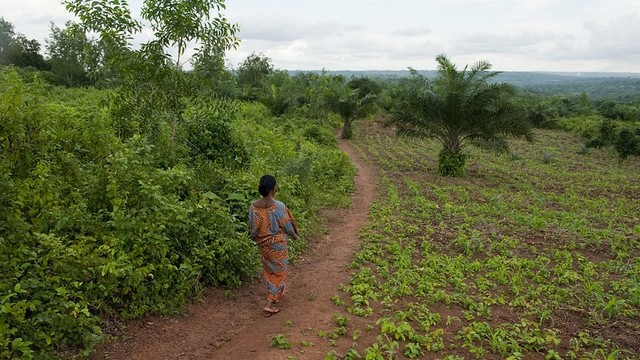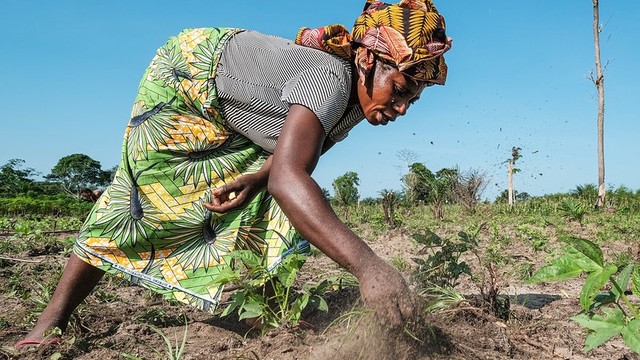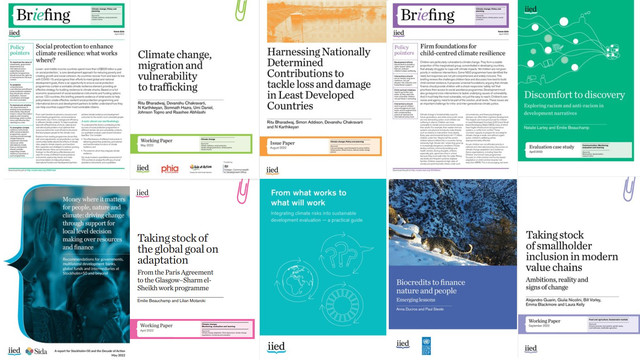IIED's best of 2015: blogs
As 2015 draws to a close, we're highlighting some of the content we have published during the last 12 months, including the wide range of blogs written by IIED staff and guests. In case you missed them, here are our top 10 most read blogs of the year.
RIP Cecil the lion – what will be his legacy? And who should decide?
 July: Outrage over the illegal killing of Cecil the lion led to calls for a ban on trophy hunting, but would this have the desired results?
July: Outrage over the illegal killing of Cecil the lion led to calls for a ban on trophy hunting, but would this have the desired results?
In her guest blog Rosie Cooney, chair of the IUCN's Commission on Environmental, Economic and Social Policy, argued against a ban, saying it could have unintended consequences for communities and wildlife. This blog generated considerable debate and Cooney was interviewed by journalists from around the world.
Let us mourn Cecil, but be careful what we wish for.
Sustainable agriculture in China: then and now
 March: The environmental impacts of China's agricultural production affect not just China, but also the global environment. Changes in Chinese food production and consumption concern us all.
March: The environmental impacts of China's agricultural production affect not just China, but also the global environment. Changes in Chinese food production and consumption concern us all.
IIED senior researcher Seth Cook reported from a workshop in Beijing that analysed the challenges and opportunities for promoting sustainable agricultural practices in China.
China's venerable history of traditional and ecological farming practices stretches back at least 4,000 years. For most of this time, it used no chemical fertilisers or pesticides.
Stopping rural people going to cities only makes poverty less visible, and stripping migrants of rights makes it worse
 March: Amid concerns that large numbers of rural migrants transfer poverty to urban areas, Cecilia Tacoli made the case for citizenship rights and proactive planning for urban growth to help reduce disadvantage and poverty.
March: Amid concerns that large numbers of rural migrants transfer poverty to urban areas, Cecilia Tacoli made the case for citizenship rights and proactive planning for urban growth to help reduce disadvantage and poverty.
In many cities of the global South aspiring to the status of 'world city', widespread evictions of low-income households are increasingly commonplace.
Five ways to make farming more sustainable
 May: In food insecure countries, large-scale investments are often considered a major driver of agricultural growth, but they can promote monocultures and intensive approaches that damage the environment and progressively decrease soil fertility. IIED researcher Laura Silici reported on a workshop in Mozambique that identified five ways to sustainably intensify agriculture.
May: In food insecure countries, large-scale investments are often considered a major driver of agricultural growth, but they can promote monocultures and intensive approaches that damage the environment and progressively decrease soil fertility. IIED researcher Laura Silici reported on a workshop in Mozambique that identified five ways to sustainably intensify agriculture.
IIED, CARE and Eduardo Mondlane University are exploring ways to produce more evidence on sustainable agriculture in Mozambique.
If food security is the answer, is it time to change the question?
 February: The growing number of people living in cities – and changes in rural-urban linkages – are re-shaping our relationship with food. IIED researcher Paolo Cravero said policymakers need to move away from the current emphasis on food production and develop a greater understanding of food security challenges in urban areas.
February: The growing number of people living in cities – and changes in rural-urban linkages – are re-shaping our relationship with food. IIED researcher Paolo Cravero said policymakers need to move away from the current emphasis on food production and develop a greater understanding of food security challenges in urban areas.
If food security is the goal, than it is indeed time to change the way we think about food.
Will climate change render the SDGs impossible?
 June: The 5th Assessment Report of the United Nations' Intergovernmental Panel on Climate Change brought stark warnings about how climate change could affect developing countries. Guest blogger Helena Wright looked at the potential impacts of climate change on the 17 Sustainable Development Goals.
June: The 5th Assessment Report of the United Nations' Intergovernmental Panel on Climate Change brought stark warnings about how climate change could affect developing countries. Guest blogger Helena Wright looked at the potential impacts of climate change on the 17 Sustainable Development Goals.
Clearly, there is a need for these discussions to come together – on development, financing, and climate change – and to be aligned in order to effectively tackle the impacts of climate change, both now and in the future.
The value and limits of urban sustainability indicators
 April: Are indicators a useful way of increasing resource efficiency and resilience in cities – and if so, which indicators are most valuable?
April: Are indicators a useful way of increasing resource efficiency and resilience in cities – and if so, which indicators are most valuable?
This question was discussed at the ICLEI World Congress of city leaders in Seoul, South Korea. Guest blogger Loan Diep and David Dodman, director of IIED's Human Settlements Group, reported on the key issues
Where city authorities are able to generate rigorous and reliable data, this can also demonstrate that they are capable of addressing important national development issues, which may include poverty reduction and health.
Ten urban planning principles every humanitarian should know
 November: Cities are increasingly where humanitarian action must respond to crisis. As the world urbanises, so too must the humanitarian sector. Can urban planning principles help humanitarians intervene more effectively?
November: Cities are increasingly where humanitarian action must respond to crisis. As the world urbanises, so too must the humanitarian sector. Can urban planning principles help humanitarians intervene more effectively?
Samer Saliba, urban learning manager at the International Rescue Committee, set out guidelines on how to improve urban humanitarian response.
Good urban planning addresses immediate needs while striving to achieve a city's unique vision of the future.
China-Africa trade and investment: benefiting Africa's rural informal economy?
 March: China is now Africa's largest trading partner. Rural farmers, loggers and miners work for and with Chinese businesses in natural resources extraction and production, mainly in the informal sector.
March: China is now Africa's largest trading partner. Rural farmers, loggers and miners work for and with Chinese businesses in natural resources extraction and production, mainly in the informal sector.
IIED researcher Xiaoxue Weng argued that understanding Africa's burgeoning informal economy is critical for assessing China's impact on the continent and designing policies that work for the rural poor in Africa.
With its scale, complexity and opportunities for poverty reduction, the informal economy is one of the biggest development challenges facing Africa today.
How do we measure adaptation?
 March: As funding to support adaptation to climate change reaches billions of US dollars, there is growing interest in the question of how we measure, monitor and evaluate adaptation. IIED senior fellow Saleemul Huq looked at some answers.
March: As funding to support adaptation to climate change reaches billions of US dollars, there is growing interest in the question of how we measure, monitor and evaluate adaptation. IIED senior fellow Saleemul Huq looked at some answers.
The blog also features a video interview with Huq in which he discusses adaptation and mitigation, and previews the 9th International Conference on Community-Based Adaptation (CBA).
The main challenge is whether to distinguish investments in – and results from – adaptation only, or integrate it with development.



